Picto Diary - 13 January 2016 - Udaipur
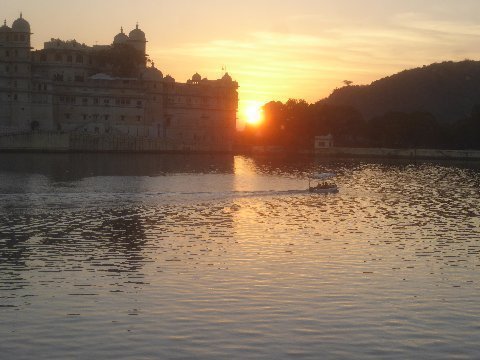
Above: Sunrise over City Palace. Udaipur, Rajasthan, India. 13 January 2016.
Image taken from our hotel room. Lake Palace Hotel.
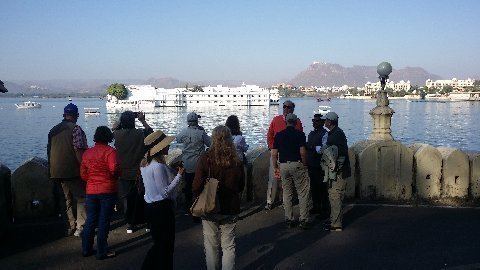
Above: Margaret Taylor Dance Group observes Lake Palace Hotel. Udaipur, Rajasthan, India. 13 January 2016.
Image taken from City Palace.
Summer residence of Maharana of Jaipur.
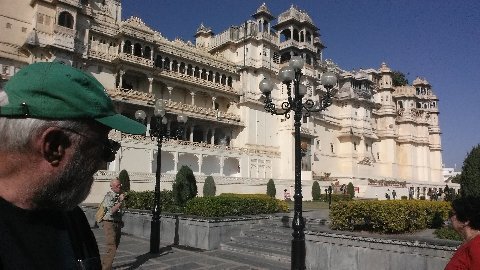
Above: Bishop observes City Palace. Udaipur, Rajasthan, India. 13 January 2016.
The palace has been built over a period of 400 years with construction starting in 1559 by Maharana Udai Singh II. Udaipur was the historic capital of the former kingdom of Mewar in the Rajputna Agency. The palace is the largest royal palace in Rajasthan... it is replete with history.
Rajput kingdoms... there were some 29 of them... retained their independence through the Mughal periods and the British periods... though, to do so, they had to intermarry with the Mughals and make various cooperative agreements with the British.
At the time of Indian independence, 1947, the new government had to persuade the kingdom rulers (maharajas and maharanas) to join the new union. In return for giving up their titles and most of their property, they were offered a "privy purse." They would be able to keep their status amongst the people and would be given a guaranteed income to retain their lifestyle.
All Rajput kingdoms eventually went along with the deal... especially those whose fortunes improved... not all kingdoms were in good financial shape at the time of independence.
The privy purse was halted by Indira Gandhi, via constitutional amendment, in 1971. Some savvy ex rulers had anticipated losing their government benefit and had converted their remaining holdings into foundations which would be exempt from government sequester. Some of the properties were converted into hotels.
In many of the former kingdoms, the ruler tradition continues, albeit with the maharaja having no political power. The Rajput people have a strong sense of tradition and many of them revere their royal families.... not unlike the queen's role in the UK today.
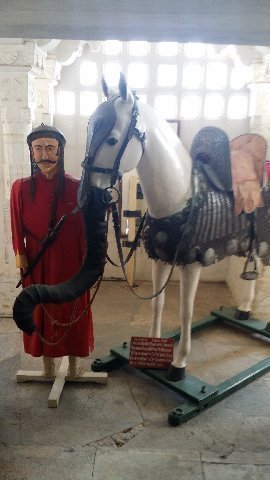
Above: Soldier and horse representation at City Palace Museum. City Palace, Udaipur, Rajesthan, India. 13 January 2015.
Rajput army leaders put dummy elephant trunks on horses. In battle, the elephants would not attack what they perceived to be other elephants.
Rajput kingdoms fought mainly against one another. As a group, they were never defeated militarily by outside powers, including the Mughals and British.
Rajput army units were seconded by the Maharajas to the British war efforts in WWI and WWII. The units fought with distinction.
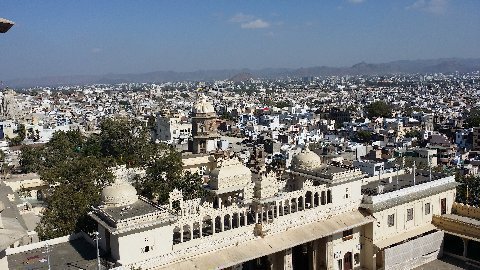
Above: Udaipur, Rajasthan, India. 13 January 2016.
Image captured from City Palace.
3.3MM population. 62% literacy rate.
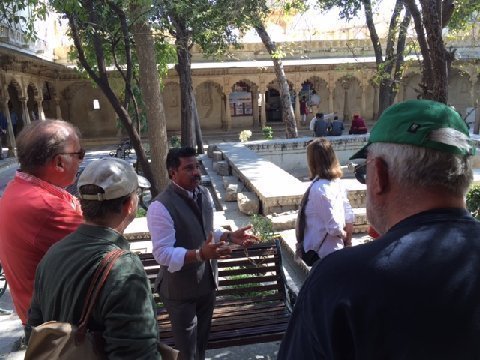
Above: Ajay our adept escort/guide, explains to members of the Margaret Taylor Dance Troupe the significance of an inner courtyard at City Palace. Udaipur, Rajesthan, India.
Image hat tip: Shock
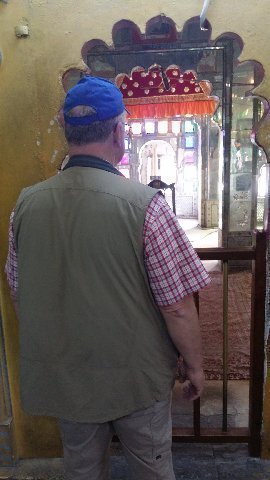
Above: Shock. City Palace. Udaipur, Rajasthan, India. 13 January 2016.
Ghost of Ani.
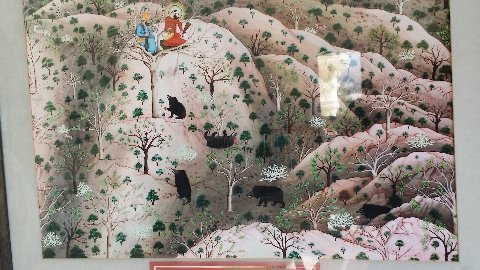
Above: Maharana Fateh Singh-ji shoots a bear. Painting. City Palace. Udaipur, 13 January 2016.
1916 painting shows five bears but it is one bear... shown in each of five positions as the Maharana shot it in a hunting expedition.
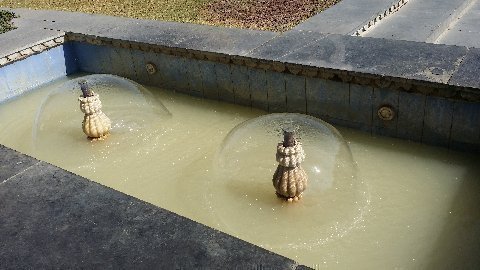
Above: Fountain, City Palace. Udaipur, Rajasthan, India. 13 January 2016.
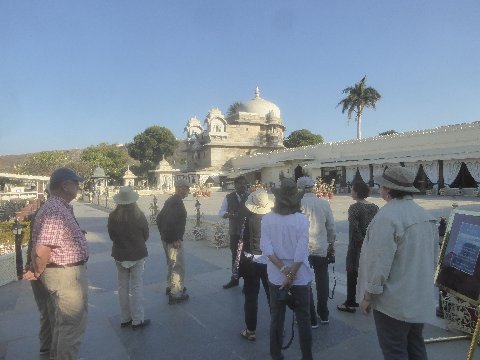
Above: Margaret Taylor Dance Group at Jagmandir Palace. Udaipur, Rajasthan, India. 13 January 2016.
Shah Jahan, Mughal emperor and builder of the Taj Mahal, lived with his wife Mumtaz for seven years in the domed palace section seen in image center. Unhappy with Shah Jehan's selection of Mumtaz to be his wife, Shah Jehan's father, Jehangir, Mughal emperor, said, "if you want to stay with me here at the Agra Red Fort, you have to give up Mumtaz. If you want to stay married to Mumtaz, leave." Shah Jahan, ever devoted to Mumtaz, left Agra in exile.
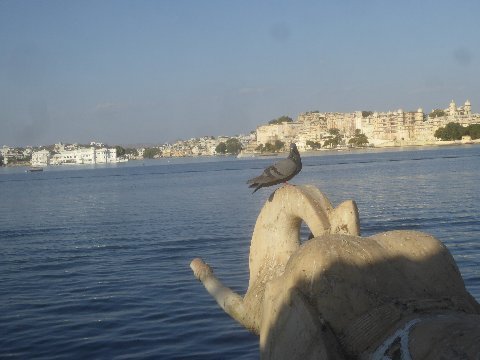
Above: Lake Palace and City Palace. Udaipur, Rajasthan, India. 13 January 2016.
Image captured from Jagmandir Palace.
This spectacular setting has been called "The Venice of India." Udaipur has been frequently ranked at the top of various lists as the worlds top tourist destination.
Udaipur's Lake Palace, City Palace, and Monsoon Palace were all used as settings for the James Bond film, "Octopussy."
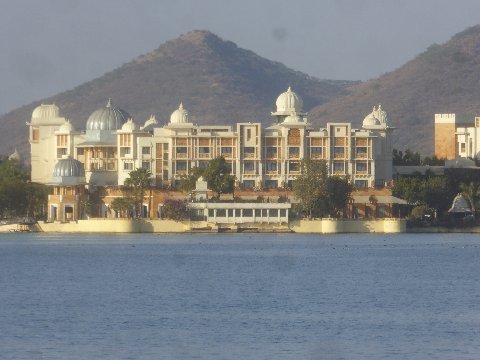
Above: Oberoi Udaivilas Hotel. Udaipur, Rajasthan, India. 13 January 2016.
Number One rated hotel in the world. 2015. Conde Nast.
TIMDT has stayed at the Oberoi before.
A stay this time at the Oberoi would have been nice, but, I wanted to stay at Lake Palace Hotel on this trip because of its long and storied history
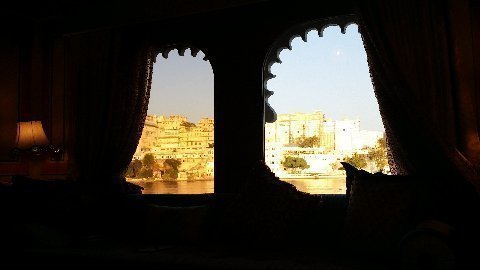
Above: City Palace. Udaipur, Rajasthan, India. 13 January 2016.
Image captured from our hotel room at Lake Palace Hotel.
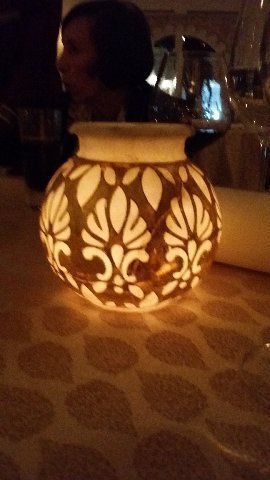
Above: Marble candle holder. Dinner. Lake Palace Hotel. Udaipur, Rajasthan, India. 13 January 2016.
Addendum:
Thank you for sharing this great trip to India with me. Imagine my surprise to learn about Jainism. Here here for the Jains something for us atheist to believe in.
The Plumber,
San Angelo, TX
Steve
Thanks for sharing your beautifull trip!
Say hello to Margareth
Regards from Brazil !
Claudia,
Sao Paulo, Brazil
Those don’t look like lemurs to me. I would judge them to be a species of monkey. It makes sense since Hanuman is the “Monkey God.”(Did you really live in India or are you making that up too?)
Jack Aroon, Mahwah, NJ
Right. Langurs. Tks. Also saw rarer capped langurs while in Kaziranga a couple of weeks ago.
My first cousin, Dr. Benjamin Z. Freed, is a Professor of Anthropology at Eastern Kentucky State University, in Lexington, KY.His doctoral dissertation involved a three-year sojourn in Madagascar, studying lemurs. Lemurs are not monkeys – langurs are.
Jack Aroon, Mahwah, NJ
Saw lemurs during visit to Madagascar in 1998. Thanks for straightening me out.